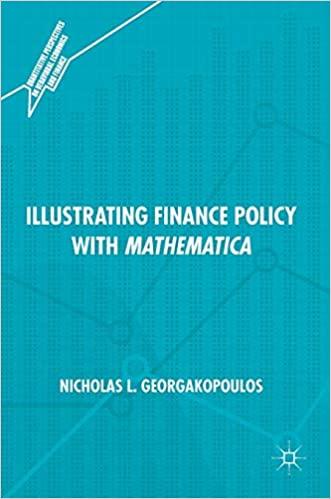Question
Not all investors are interested in accepting extra risk in order to receive a higher return. Investors can be classified as risk adverse, risk neutral,
Not all investors are interested in accepting extra risk in order to receive a higher return. Investors can be classified as risk adverse, risk neutral, or risk seeking. To determine the risk associated with an investment, calculations are made to determine the risk-free rate and the risk premium associated with the investment.
|
| Security 1 | Security 2 | Security 3 |
|
| Risk-free Rate of Interest | 3.00% | 3.00% | 3.00% |
|
|
|
|
|
|
|
| Various Risk Rates |
|
|
|
|
| Interest Rate Risk | 1.00% | 1.50% | 1.25% |
|
| Credit Risk | 0.50% | 0.25% | 0.25% |
|
| Inflationary Risk | 0.50% | 0.50% | 0.50% |
|
| Liquidity Risk | 0.25% | 0.25% | 0.50% |
|
| Market Risk | 0.50% | 0.50% | 0.50% |
|
| Business Risk | 1.25% | 0.50% | 1.50% |
|
|
|
|
|
|
|
|
|
|
|
|
|
|
| Security 1 | Security 2 | Security 3 |
|
| Risk Premium |
|
|
|
|
| Nominal Rate of Interest |
|
|
|
|
| Expected Annual Return* |
|
|
|
|
| QUESTIONS: a. Fill in the blank spaces for risk premium, nominal rate of interest and expected annual return. b. What is the minimum about of interest an investor would require for each of these securities. (25 points) ? |
|
|
|
|
Step by Step Solution
There are 3 Steps involved in it
Step: 1

Get Instant Access to Expert-Tailored Solutions
See step-by-step solutions with expert insights and AI powered tools for academic success
Step: 2

Step: 3

Ace Your Homework with AI
Get the answers you need in no time with our AI-driven, step-by-step assistance
Get Started


